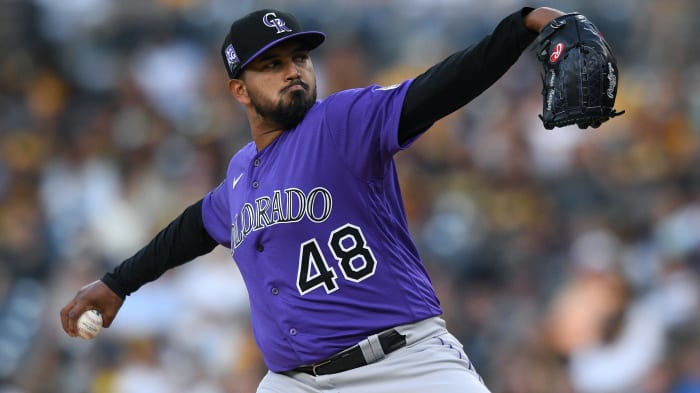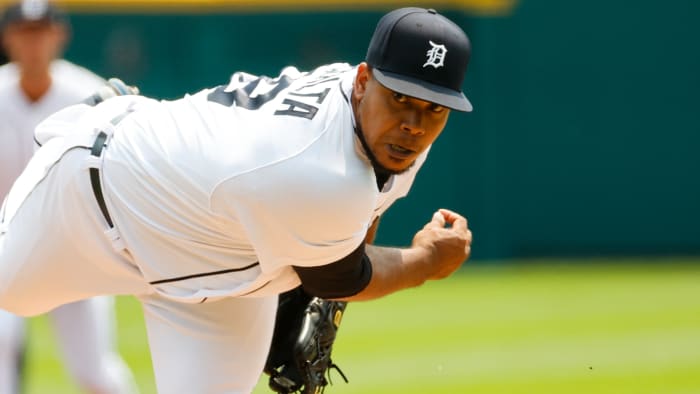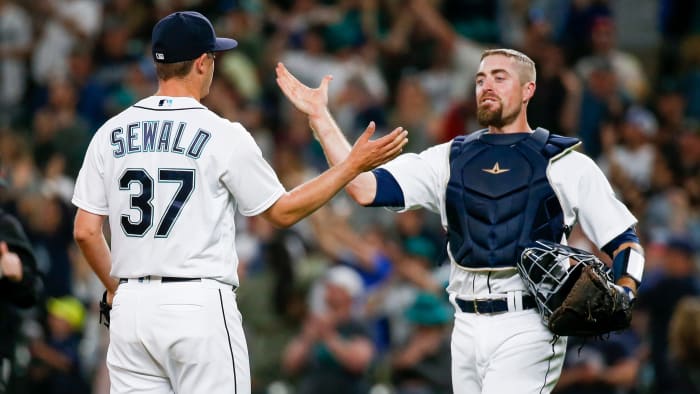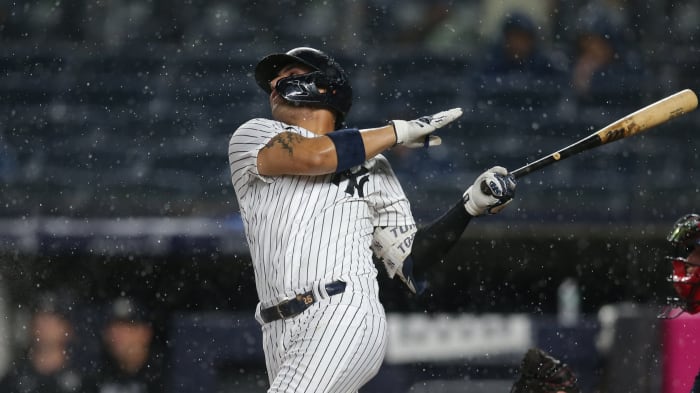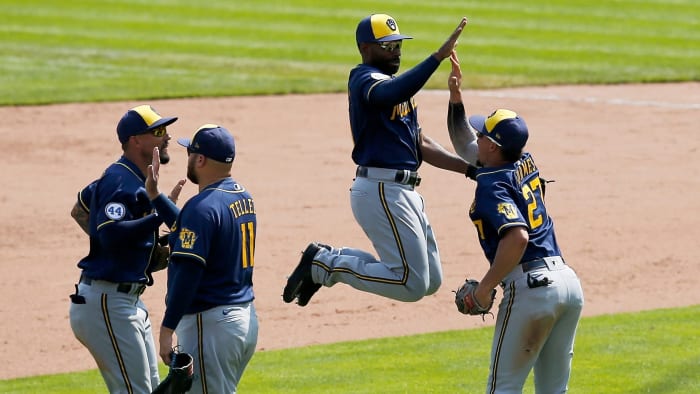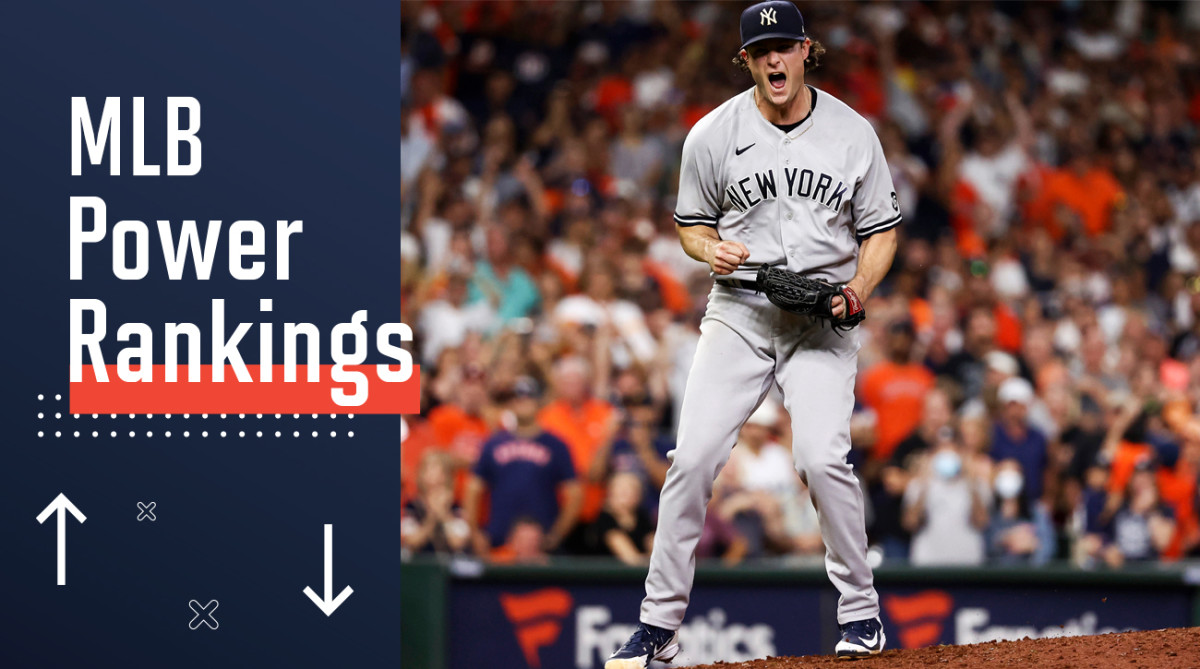
MLB Power Rankings: Resetting for the Second Half of the Season
The All-Star break is in the rearview mirror, and with its passing we return to our normally scheduled MLB power rankings programming. As all teams do with their midseason hiatus, we’ve taken the time off to reassess our strategy here at the power rankings headquarters, and we’ll be trying out some formatting tweaks that we hope will make reading these entries each week an even better experience.
Beginning this week, instead of writing short blurbs on every team, we’ll dive a little bit deeper on a handful of clubs, highlighting the ones that had particularly eventful weeks while making sure we mix up which teams are featured on a weekly basis. In the past, I’ve written on all the American League teams while Will Laws handled the National League. Now, we’ll alternate writing each week—though we’ll both still rank the teams every week for consistency’s sake.
Hopefully, you’ll enjoy more in-depth analysis on select teams in this space, even if that means your favorite team doesn’t get mentioned regularly. While the shape of this series has shifted, the ranking philosophy remains the same: If you want to be ranked higher, you have to win more games.
With that programming note out of the way, let’s get to it.
30. Arizona Diamondbacks (Last Week: 30)
29. Baltimore Orioles (LW: 28)
28. Pittsburgh Pirates (LW: 29)
27. Texas Rangers (LW: 27)
26. Kansas City Royals (LW: 24)
25. Colorado Rockies (LW: 26)
Quick, can you name the team that leads the majors in starting pitching in fWAR over the last month? If you didn't guess the Rockies, your deduction skills could use some work, but I really wouldn’t blame you given the nature of the team and the treachery of pitching at Coors Field.
But the answer is in fact Colorado, and the Rockies’ woeful season has persisted in spite of a rotation that’s more than held up its end of the deal. FanGraphs’s calculation for pitching WAR leans heavily on FIP, which is park-adjusted, so Rockies pitchers don’t have Coors Field held against them in this equation. But over the last month, the group’s ERA (3.17) is actually better than its FIP (3.20)—an encouraging sign even if the wins haven’t necessarily followed.
There’s a lot to like about this group, but it starts with All-Star Germán Márquez. The 26-year-old is having his best season and is on a team-friendly five-year, $43 million contract that runs through 2023 (with a 2024 club option). The return for him in a trade would be substantial, but that’s a dicey proposition for a franchise that’s already shipped away Nolan Arenado and could lose Trevor Story this offseason (that is, if he’s not traded himself). Márquez is 4–0 with a 0.75 ERA and 34 strikeouts in his last five starts and has given up one run or fewer in eight of his last 10 outings.
While Márquez has headlined Colorado’s rotation, he’s hardly alone in thriving as of late. Lefthander Kyle Freeland didn’t debut until June 25 after injuring his shoulder in spring training. He struggled out of the gates but has a 2.25 ERA with 24 strikeouts and just one home run allowed in his last five starts. Jon Gray has a 2.40 ERA in his last five starts and twirled perhaps his best game of the season Sunday against the Dodgers, pitching seven innings for the first time all year. Antonio Senzatela has been reliable for most of the season, allowing three or fewer earned runs in 11 out of 17 starts.
Of that group, Gray is the most likely to be dealt in the next two weeks, as he’s a free agent this winter. The rest are all under club control through at least 2023 and would be relatively affordable, so the team would have a strong foundation if it has sights on contending over the next two seasons beyond 2021. Trying to predict Colorado’s vision for its future is difficult to parse, but that picture will continue to look brighter if strong pitching performances continue to stack up.
24. Minnesota Twins (LW: 24)
23. Miami Marlins (LW: 22)
22. Detroit Tigers (LW: 23)
The Tigers began the second half with a three-game sweep of the Twins, outscoring Minnesota 13–4 in the series with two shutouts. Improved pitching has been the hallmark of what’s been a pleasantly surprising season for the Tigers, with Sunday’s win spearheaded by maybe the most surprising of all Detroit’s talented arms: Wily Peralta.
The 32-year-old did not pitch in 2020 after posting a 5.90 ERA in 2019, and he had not made a a big league start since May 14, 2017. The Tigers signed him to a minor league deal in February, and he impressed people enough in six Triple-A starts to earn a call-up on June 15. He’s 3–1 with a 1.64 ERA in 33 innings, and though he doesn’t miss many bats, he induces ground balls at a 57.4% clip and keeps hitters off balance with a strong changeup that opposing batters have not recorded a hit against in 23 plate appearances.
Peralta’s ascent has been a welcome development, but he doesn’t figure to feature prominently in the long-term success of the franchise. That designation applies most to Casey Mize and Tarik Skubal, who have each impressed as they near the 100-innings mark for the season. The Tigers have several building blocks on the offensive side as well, with Akil Baddoo, Daz Cameron, Jake Rogers and Eric Haase all showing promise with their opportunities at extended playing time.
Detroit isn’t going to creep into the wild-card race, but the club is on pace for its most wins in five years and is making 2019’s 114-loss campaign feel like a distant memory. The Tigers aren’t ready to contend yet, but the seeds planted over this yearslong rebuild are finally beginning to bear fruit.
21. Washington Nationals (LW: 13)
20. Chicago Cubs (LW: 16)
19. Los Angeles Angels (LW: 19)
18. St. Louis Cardinals (LW: 21)
17. Atlanta Braves (LW: 17)
16. Seattle Mariners (LW: 18)
I’ve written before about how the Mariners have been the league’s biggest overachievers, and how their remarkable success in one-run games was unsustainable. Right on cue, Seattle’s first game of the second half resulted in—you guessed it—a 6–5 win over the Angels in which Kendall Graveman gave up three runs in the bottom of the ninth inning, seemingly to juice those one-run game numbers and prove a point.
The Mariners are now a league-best 20–8 in one-run games this season. They’ve outperformed their Pythagorean record by eight games—twice as many as the next-“luckiest” teams (the Red Sox and Cardinals). While luck plays a role in every team’s success, Seattle’s pitching—particularly its bullpen— has been the driving force that has the team firmly in the hunt for a playoff spot.
Seattle’s bullpen leads the majors in fWAR (4.6) and is second in FIP (3.51). What’s most impressive is that the key performers in the group were all buy-low acquisitions that have made general manager Jerry DiPoto look like a genius.
Setup man Paul Sewald, who averages nearly 16 strikeouts per nine innings with a 2.00 ERA, had a 6.26 ERA over the previous three years with the Mets before signing a minor league deal this offseason. Closer Graveman had his 2021 option declined in October before re-signing on a one-year, incentive-laden deal for this year. Drew Steckenrider and JT Chargois were each minor league signees after not pitching in the majors last season. It’s the kind of patchwork front offices dream of but rarely pull off, and it’s the reason the Mariners’ close-game magic is built upon a very legitimate foundation.
15. Cleveland (LW: 14)
14. Philadelphia Phillies (LW: 20)
13. Cincinnati Reds (LW: 12)
12. New York Yankees (LW: 15)
With their 9–1 win over the Red Sox on Sunday, the Yankees have won their last three series on the strength of their pitching. New York has allowed one run or fewer in five of its last six wins, getting contributions from ace Gerrit Cole and a motley crew of other starters that have stepped up when needed.
Nestor Cortes Jr. has pitched in nine games so far—the last two of which were starts—and has a 1.05 ERA while striking out 31% of opposing hitters. He hasn’t allowed a home run all year despite a 41.4% fly ball rate that would rank among the highest in the league if he had enough innings to qualify. Regression might come for Cortes down the line, but right now he’s been a saving grace for a club that’s in dire need of quality starts.
Offensively, some usual suspects are starting to wake up at the right time. Gleyber Torres has homered in each of his last two games after hitting none in his previous 28. The Yankees desperately need Torres to rediscover his power, as the 24-year-old—who hit 38 home runs in 2019—has a mere .087 isolated power this season, fifth-lowest among qualified hitters and in the company of guys like Elvis Andrus and David Fletcher.
This is still a club that needs help if it’s to get back into the playoff field. With New York’s arrow pointing up and to the right, expect the rumor mill to be busy as the trade deadline looms large.
11. New York Mets (LW: 11)
10. Oakland A’s (LW: 9)
9. Toronto Blue Jays (LW: 10)
8. Milwaukee Brewers (LW: 7)
The Brewers are 18–7 over the last month, including a three-game sweep of the Reds to start the second half. Milwaukee has a firm grip of the NL Central, currently seven games clear of second-place Cincinnati. At this point, the Brew Crew is starting to look like a bonafide World Series challenger.
If there’s any truth to the old philosophy of championship-caliber teams being built upon strong starting pitching, then Milwaukee has most definitely reserved a spot in the inner circle of contenders. The trio of Corbin Burnes, Brandon Woodruff and Freddy Peralta have a combined 2.23 ERA over 311 innings so far, capped by Burnes’s brilliant 12-strikeout outing on Sunday.
Is that enough to overcome a subpar offense? The Brewers rank 20th in the majors in adjusted hitting, with a 91 wRC+. The last World Series participant to rank that low was the 2014 Royals, who had a 92 wRC+ and eventually lost to the Giants in seven games. That year’s Kansas City bullpen was particularly strong, while Milwaukee’s group ranks more in the middle of the pack. The bats have come alive during the past month, though, with the Willy Adames trade looking better and better by the day.
The Brewers are well on their way to their fourth consecutive postseason appearance, and their three-headed starting pitching monster makes them a dangerous bunch once they get there. Adding a bat before the trade deadline—perhaps an outfielder like Joey Gallo or Starling Marte—would bolster Milwaukee’s October dreams even further.
7. Boston Red Sox (LW: 4)
6. Tampa Bay Rays (LW: 8)
5. San Diego Padres (LW: 6)
4. San Francisco Giants (LW: 3)
3. Houston Astros (LW: 2)
2. Chicago White Sox (LW: 5)
1. Los Angeles Dodgers (LW: 1)
More MLB Coverage:
• How Vladimir Guerrero Jr. Can Still Win AL MVP in the Year of Ohtani
• Second-Half Mysteries: Inside MLB's Thrilling Stretch Run
• Five ‘Angel and Devil’ Trade Deadline Conversations
• Three Big Questions Ahead of the MLB Trade Deadline






























